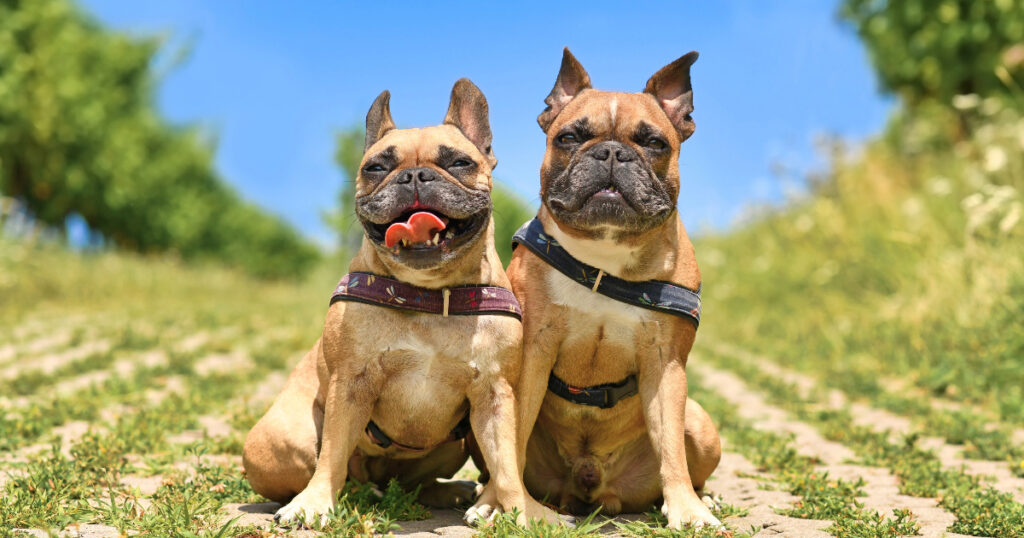Deciding between a dog collar or harness for walking your pup can be a tough choice. Both have potential benefits and downsides to consider.
We’ll summarize the key pros and cons of collars versus harnesses. We’ll also provide tips on which option may be right for your dog based on their breed, size, age, and personality.
Proper equipment fitting is also covered to avoid injuries. Read on to make an informed decision on the best gear for a safe and happy walk.
Collars Provide Convenient Identification But Can Cause Injury

Dog collars have been used for thousands of years to display ownership and attach leashes. The convenience of slipping a collar on and off makes them an easy choice. However, collars also come with some downsides.
Flat buckle collars are the most common style. They simply buckle closed like a belt. These allow you to conveniently attach your dog’s identification and rabies tags. Having a visible ID is invaluable in case your dog escapes or gets lost.
Other collar styles like rolled or martingale collars cater to specific needs. Rolled leather collars don’t match the fur underneath. Martingale collars tighten when pulled, preventing escape for breeds with slim necks like Greyhounds.
However, collars pose some risks. If the collar is too loose, your dog may wiggle free and escape. But a collar that is too tight can cause pain and restrict airflow.
Dogs who pull hard against their collar are also at risk for neck, spine, and trachea damage. The pressure on a small area of the neck during constant tugging or quick jerks can injure important structures.
Certain dogs are at even higher risk from using collars. Brachycephalic breeds like Pugs struggle to breathe normally. The collar pressure compounds this. Dogs with prior neck or back injuries should also avoid collars, which can worsen these problems.
When walking a dog who isn’t leash trained but wants to explore, the constant tugging on a collar can lead to real damage over time.
Harnesses Spread Force To Protect Dogs

In difference to collars, harnesses spread leash pressure over the chest, shoulders, and back. This avoids concentrated force on the neck area while walking, running, or hiking.
Harnesses designed for no-pull training go a step further. They have a leash attachment to the dog’s chest. When the dog pulls, the harness steers them back toward you, actively discouraging pulling.
For dogs who slip out of their collar, the extra security of a harness can provide peace of mind. The multiple straps distribute force more widely and are less likely to allow escape. Proper fit is still important though.
Harnesses also benefit dogs with tracheal collapse, a condition where pressure on the trachea causes coughing. They reduce strain on the neck and throat by moving the force to the body.
Brachycephalic breeds also do better with a harness to avoid limiting their airway. The same goes for any dog prone to respiratory issues.
Because harnesses don’t put pressure on the spine, they can help prevent injuries in long-backed dogs prone to IVDD, like Dachshunds. They also reduce back pain from pulling against the leash.
For powerful pullers, a harness gives you more control. Dogs can pull against their own strength with a collar and overpower their walker. But harnesses allow control using your own body weight instead of brute strength.
The main downside of harnesses is convenience. Collars with ID tags often stay on all the time, while harnesses come on and off for walks. Fitting the straps securely also takes more time.
Head Collars Control Movement at the Head

Unlike collars or harnesses, head collars wrap around a dog’s muzzle and head. The premise is simple – where the head goes, the body will follow.
Head collars allow excellent control of a dog’s movements with minimal effort, the same way a halter controls a horse. For small walkers or dogs who pull constantly, a head collar is an excellent training tool.
The downside is a proper fit. Flat-faced breeds may be hard to fit in a head collar. And some dogs take time to adjust to having something on their face. Offering treats and going slow is key.
But in the right circumstances, a head collar provides tremendous leverage for controlling a dog’s body through its head. Just don’t use one with a long line, since rapid deceleration could cause injury.
Harnesses Are Best For Training And Safety

For most everyday walks, harnesses provide the best combination of control and safety. They give you handling leverage while avoiding injury to your dog’s neck or back.
Starting leash training with a harness develops good habits from the beginning. Excited puppies or untrained rescues won’t cause damage by pulling against their collar. No-pull designs actively steer them back toward you using their own force.
Harnesses also allow freedom. Once your dog reliably walks beside you off leash, attaching a long line to a harness avoids neck strain if they hit the end while running.
For emergency handling, well-fitted harnesses give you the ability to quickly gain control of your pup. Top-mounted handles make it easy to prevent jumping or restrict movement if needed.
While out for a walk, dogs may encounter other people, dogs, or distractions. Having the instant extra control of a harness provides security to handle the unknown.
And for simple convenience, some harnesses include a metal ring to attach ID tags, avoiding the need for a separate collar. For even more convenience, step-in harnesses don’t need to slip over your dog’s head.
No single option is right for every dog in every situation. And often using both a collar and harness together offers the benefits of each. But overall, harnesses provide safety, control, and protection for a wide variety of dogs. Their advantages make them an excellent choice for both exercise and training.
Frequently Asked Questions
What are the main differences between a dog collar and a harness?
The main difference is that a collar wraps around the neck while a harness wraps around the shoulders, chest, and back. Collars only attach at one point while harnesses distribute force over a larger surface area.
When should you not use a collar?
Avoid using collars for dogs prone to pulling, as well as brachycephalic breeds, dogs with tracheal collapse, spinal issues, or other neck/back injuries. The concentrated force of a collar can exacerbate these conditions.
What’s the best way to find a proper fit?
For both collars and harnesses, you should be able to fit 1-2 fingers between the strap and your dog’s body. This avoids being too tight or loose. Check for rubbing or restrictions to their natural range of motion.
Can harnesses encourage pulling?
Yes, back-clip harnesses can inadvertently train your dog to pull. The force is spread across their body instead of the neck, so they don’t feel compelled to stop pulling. Use a front-clip no-pull design instead.
Should I use a collar or harness for a long walk?
For long walks, always use a harness to avoid neck strain or injury. Attaching a long line to a harness protects the neck if your dog reaches the end at high speed while exploring or running.
What’s the best way to identify my dog if using a harness?
Look for a harness with a metal ring to attach ID tags, or use a collar alongside the harness solely for your dog’s ID and rabies vaccination tags. A collar is a must for visible identification.
Conclusion
At the end of the day, the choice between a dog collar versus a harness depends on your individual pet. Consider their breed, age, training, and any medical conditions. For most dogs, a harness avoids injury and provides better control while allowing freedom of movement.
But collars serve an important purpose for ID that shouldn’t be overlooked. Many owners choose to use both a collar and harness together on walks to get the benefits of each.
Just be sure to consult your vet if you have any concerns over which is healthiest for your dog.

